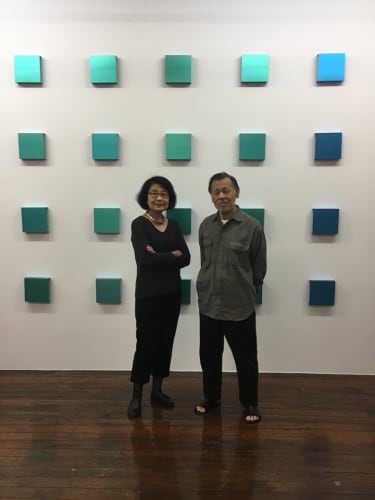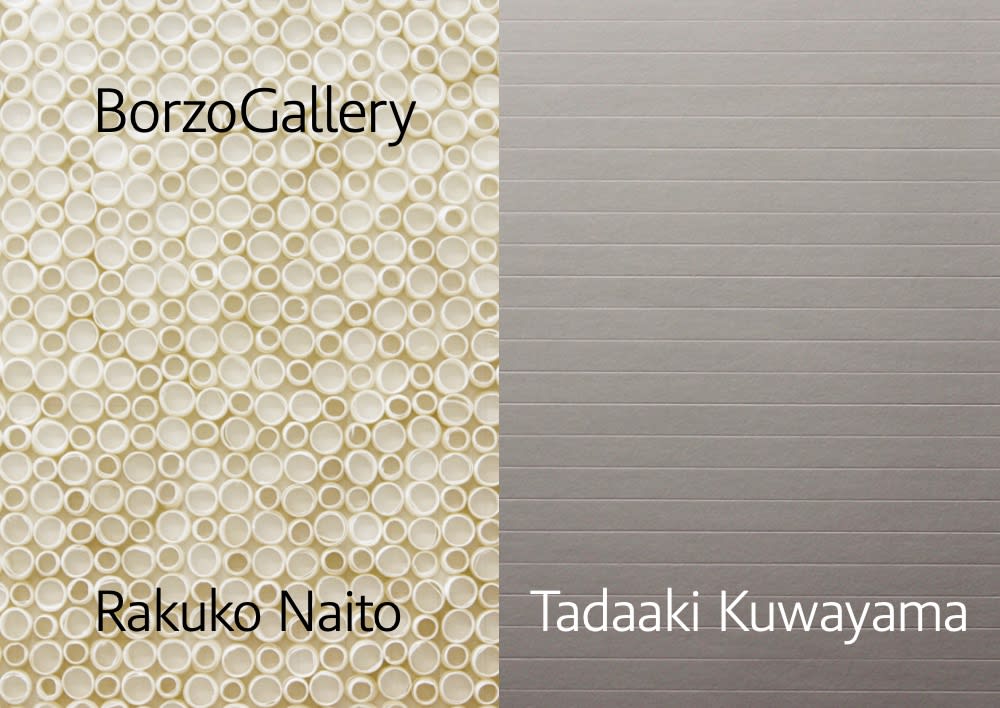Rakuko Naito & Tadaaki Kuwayama: "Naito & Kuwayama"
'New Shapes of Color' / 'Vormen van de Kleur', (1966, Stedelijk Museum) first introduced the radical work of the American artist Tadaaki Kuwayama to the Dutch public. The exhibition was put together by two legendary curators: Edy de Wilde and Wim Beeren, who - in 1966! - thereby even further validated the Stedelijk Museum's position as avant-garde. De Wilde and Beeren showed minimalist, monochrome painting in 'New Shapes of Color'. In addition to that of Kuwayama, the exhibition included works by other Americans such as Josef Albers, Ellsworth Kelly, Barnett Newman, Kenneth Noland, Frank Stella, Robert Indiana and Donald Judd. The Dutch artists Bob Bonies, Peter Struycken and Mark Brusse also took part in the exhibition.
I first encountered Kuwayama's work when we participated in Expo Chicago, September 2015. Hill Gallery from Michigan were showing a solo by Kuwayama here, and its effect on me was stunning. Together with my London colleague James Mayor we bought five works on the spot and made arrangements with Tim Hill to visit Kuwayama and his wife in New York and to discuss an exhibition in London and in Amsterdam. In early 2017 James Mayor and I visited Tadaaki Kuwayama and his wife Rakuko Naito in their studio / apartment in New York. The London exhibition 'Radical Neutrality' at The Mayor Gallery took place that same spring. The Amsterdam debut was likewise in the spring at - give credit where credit is due - our colleague Willem Baars. Willem had apparently also been fascinated by Kuwayama's oeuvre, although in this case the link happened to be via his close relationship with Kuwayama's gallery in Osaka.
In two visits to the artists Kuwayama and Naito in New York, both our assistant Renee and myself were greatly impressed by the artistic integrity of the couple and by their warm hospitality. The option for a double exhibition was also a natural one, thereby instinctively appealing to the direction taken by Borzo over the past twenty years with particular attention for zero and minimalist art. The extraordinarily fascinating art of Rakuko Naito has clear common ground with both movements making it wonderfully complementary to as well as autonomous from that of her husband.
Kuwayama's gallery exhibition has something of a retrospective character: from a rare black relief from 1961 to his most recent series of titanium objects. For Naito we are showing some fascinating white paper reliefs from recent years. It was an honour and a privilege to have been able to get to know the work of these artists, just as much as the warm personalities of Rakuko Naito and Tadaaki Kuwayama.
Paul van Rosmalen, Amsterdam, April 2018
-------------------
Despite the fact that Rakuko Naito and her husband Tadaaki Kuwayama have lived in New York for sixty years (they moved there in 1958), their work is still full of Japanese influences. His Minimalist works are more rigid and stiff than many of his American contemporaries. For Rakuko Naito the Japanese influence is in her meticulous way of working and the material: Kozo Washi, a Japanese paper. She folds, tears, rolls pieces of paper and systematically arranges these into a composition inside a shallow box. She has a unique relationship with the paper and the sophisticated result is quintessentially Japanese. For me her reliefs are strongly reminiscent of those of Jan Schoonhoven. Each shows a love of seriality, has light playing an important role and is averse to interpretation. The titles, as for those of her husband and Jan Schoonhoven, are always very systematically composed. They consist of her initials, the dimensions and a serial number.
Because Rakuko Naito executes her own designs, she is limited in the physical dimensions: she will never make anything larger than 36 inches. When I visit their studio in December 2017 she shows me one work made of small cotton balls. She orders them in bulk from India, where they are used as tapers to light oil lamps. It is her only relief that includes the use of something "ready-made".
Her work has a deep effect on me the moment I first see it. Its seriality: different versions in the same frame are restful, but each is unique and has a very individual character. They are gentle and there is beauty in their simplicity. The craftsmanship and the tactile nature come from an established and refined methodology.
I am so delighted to produce an exhibition that brings together the art of Naito and Kuwayama. In the same way that they have always experienced it in their linked studios. His rigid Minimalist art facing her paper reliefs. A marriage made in heaven I think.
Renee Schuiten-Kniepstra, Amsterdam, March 2018











